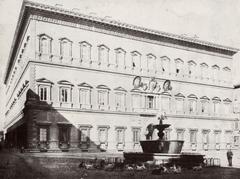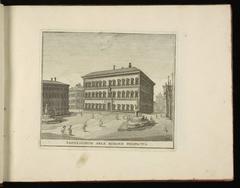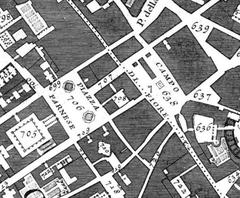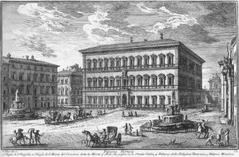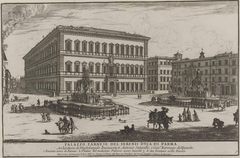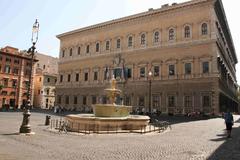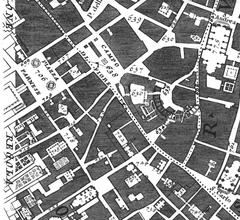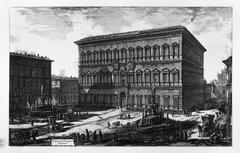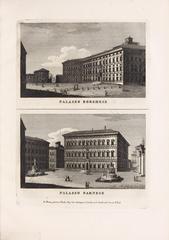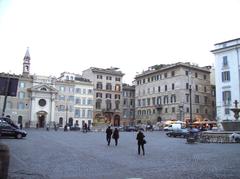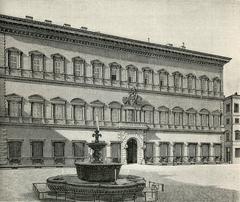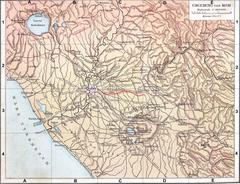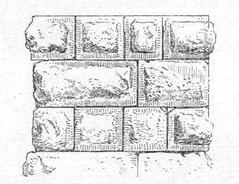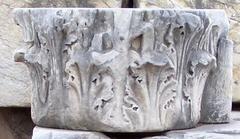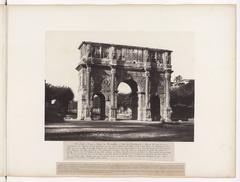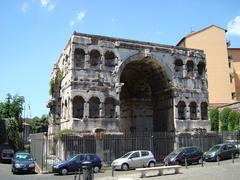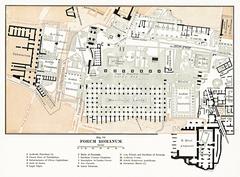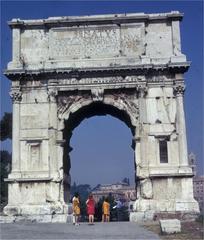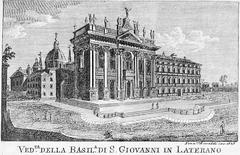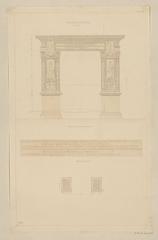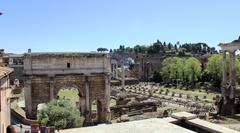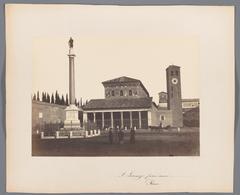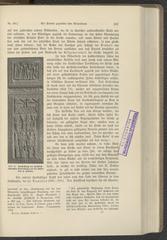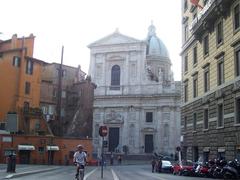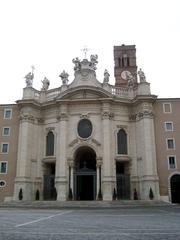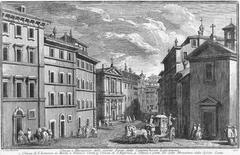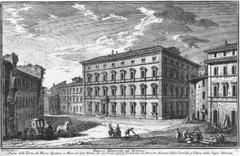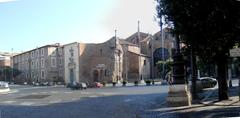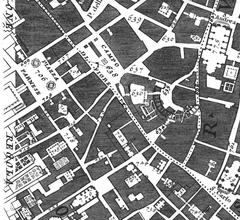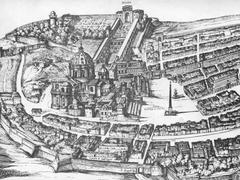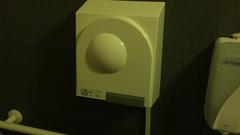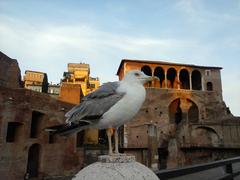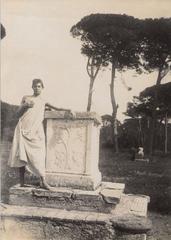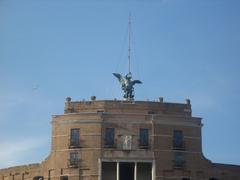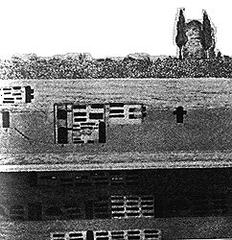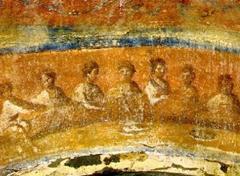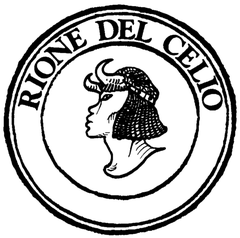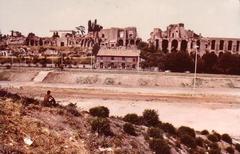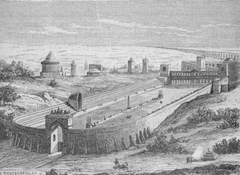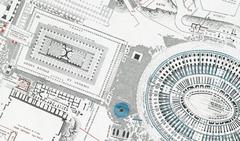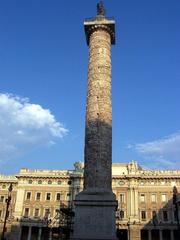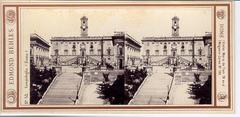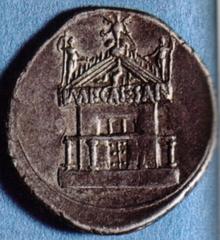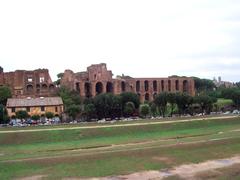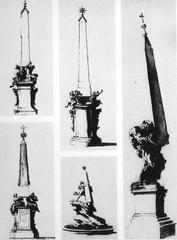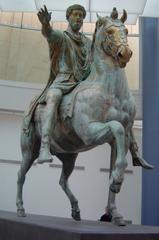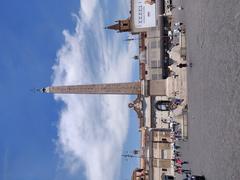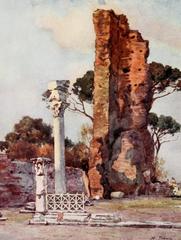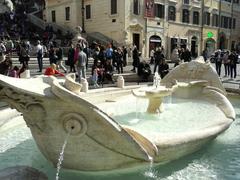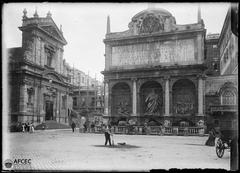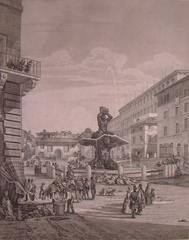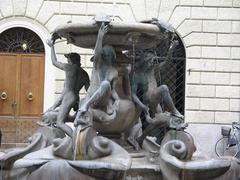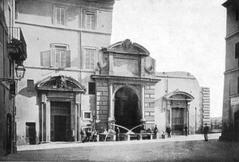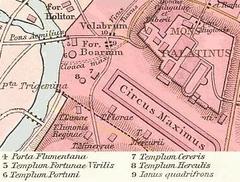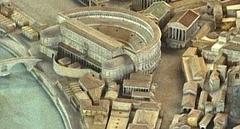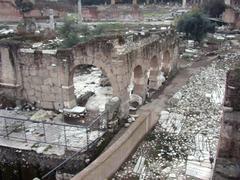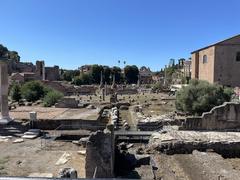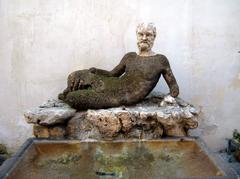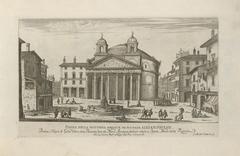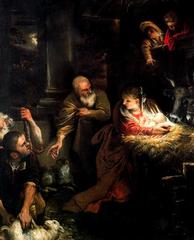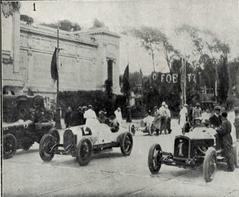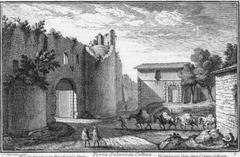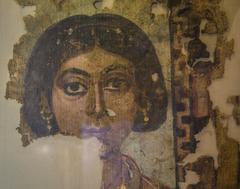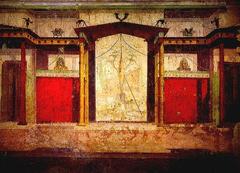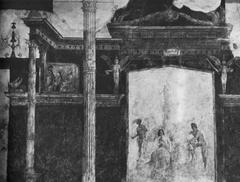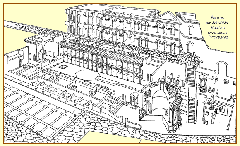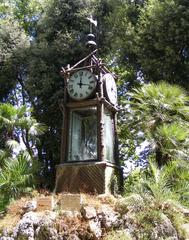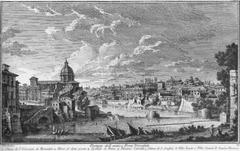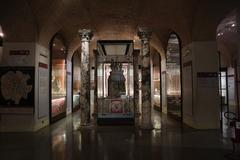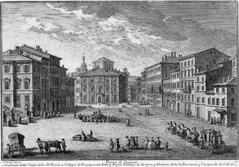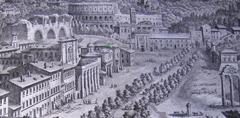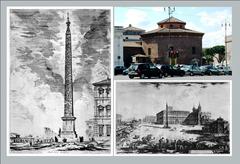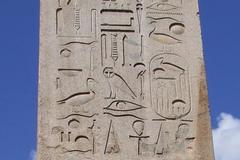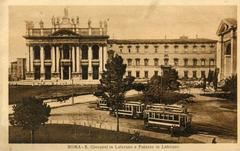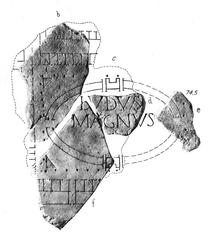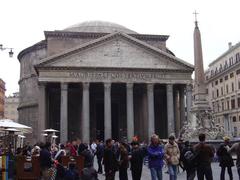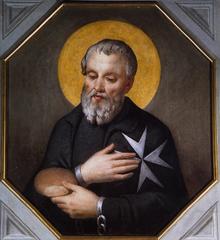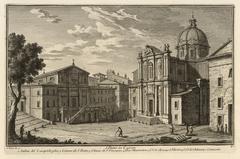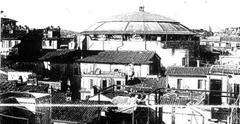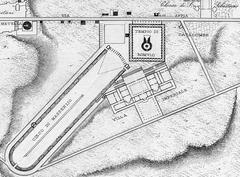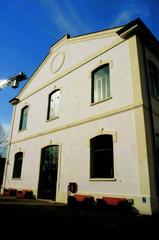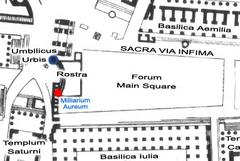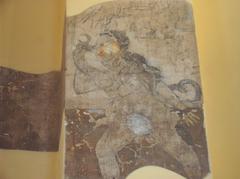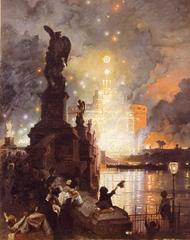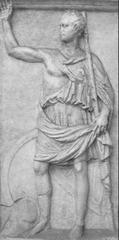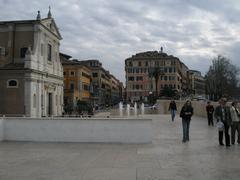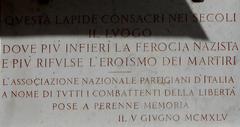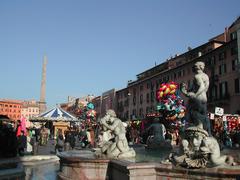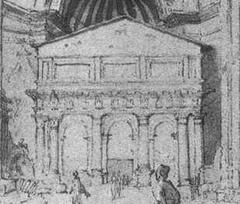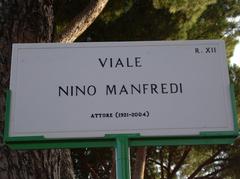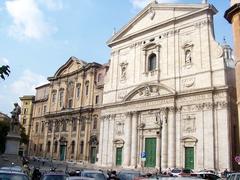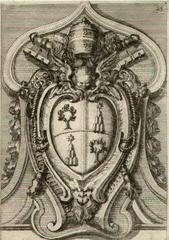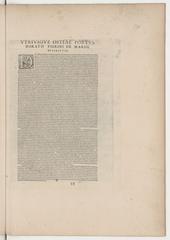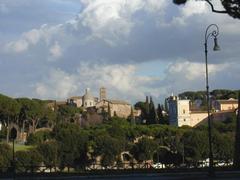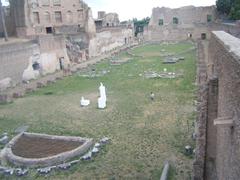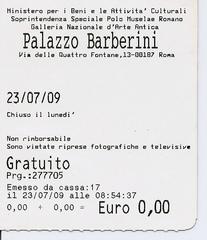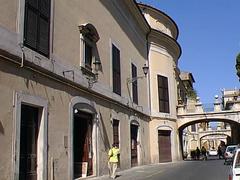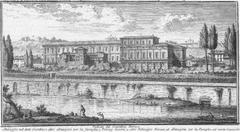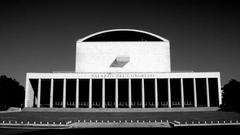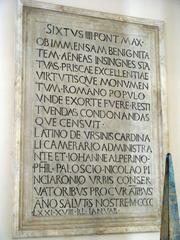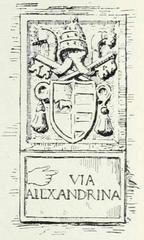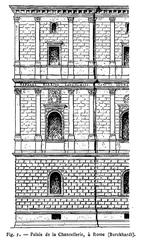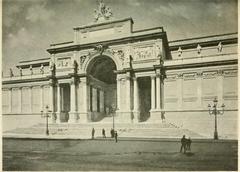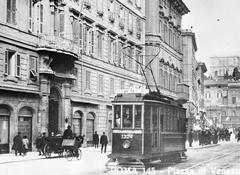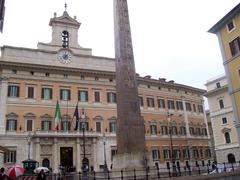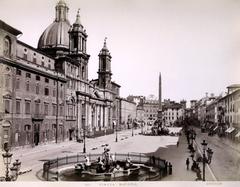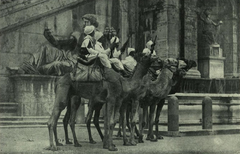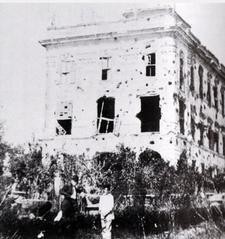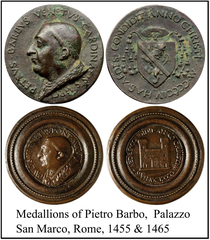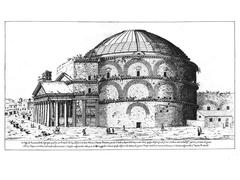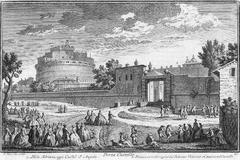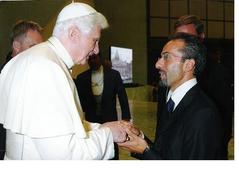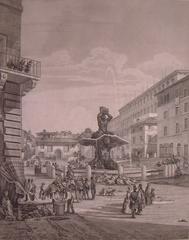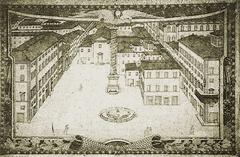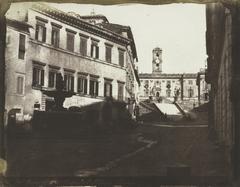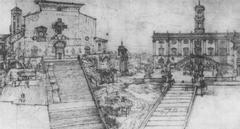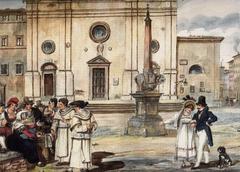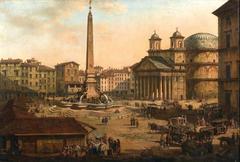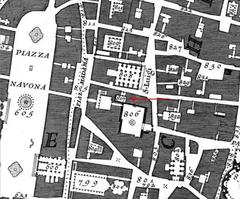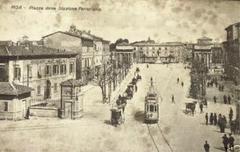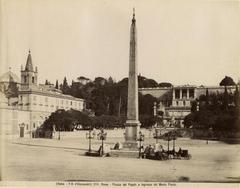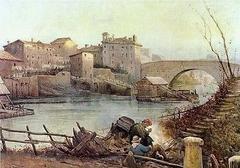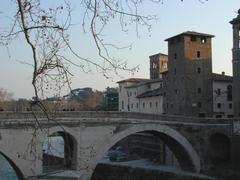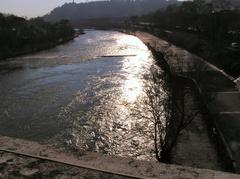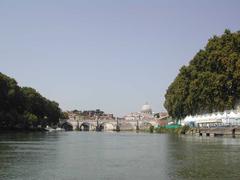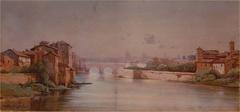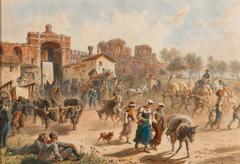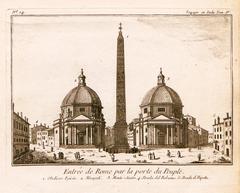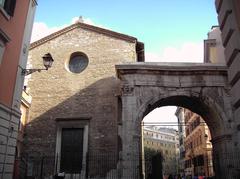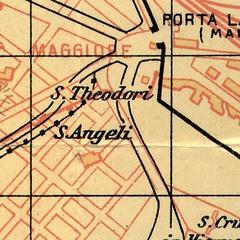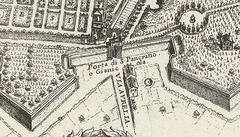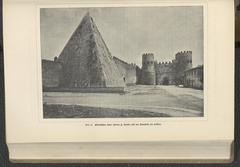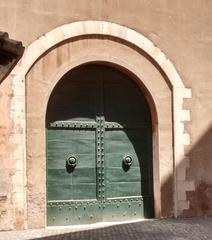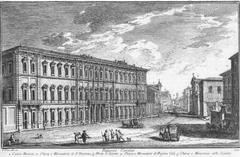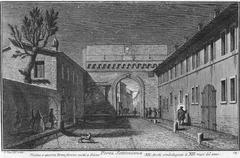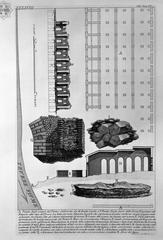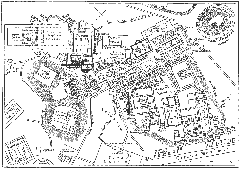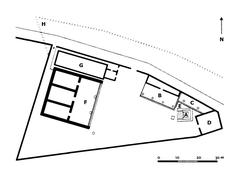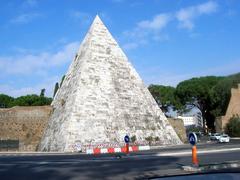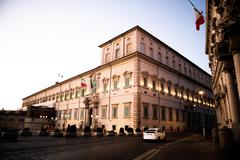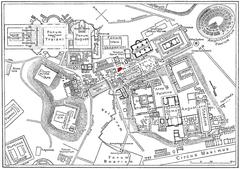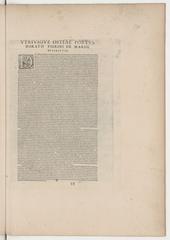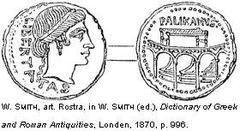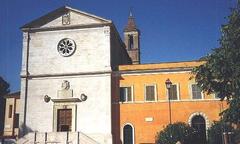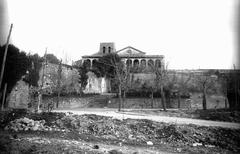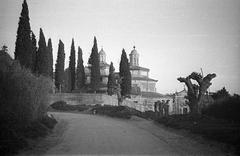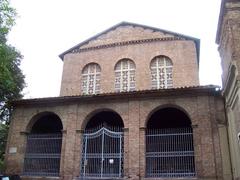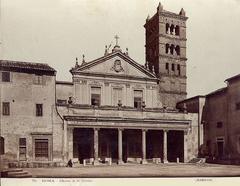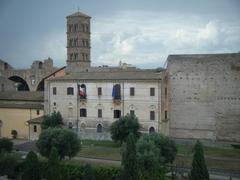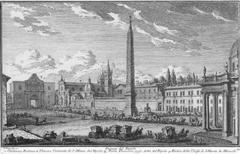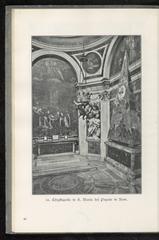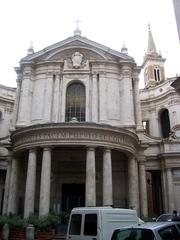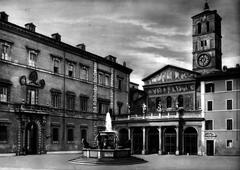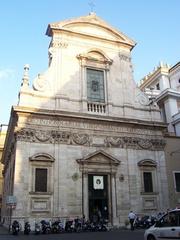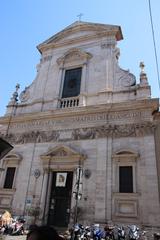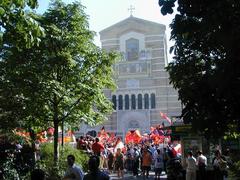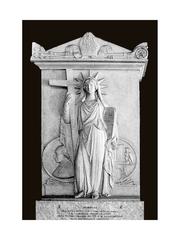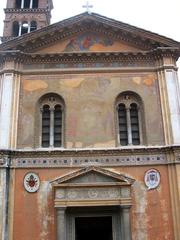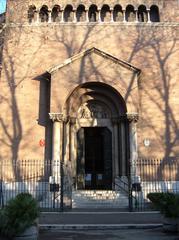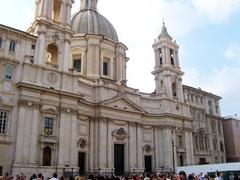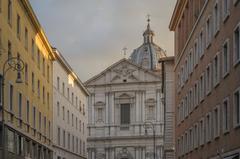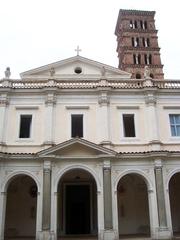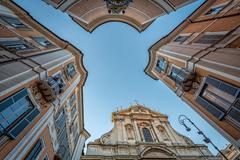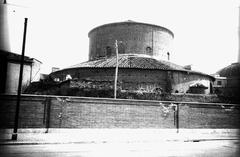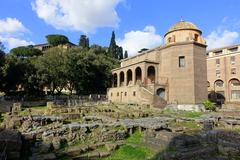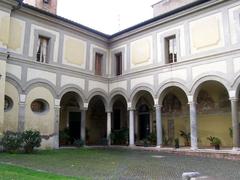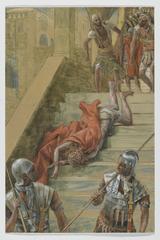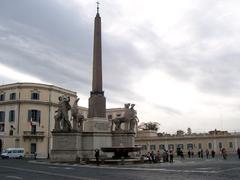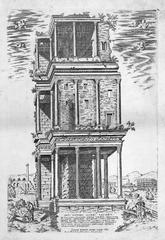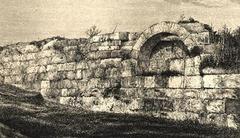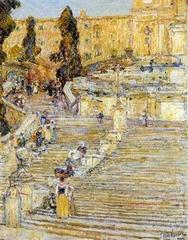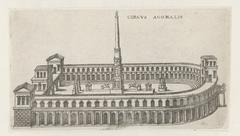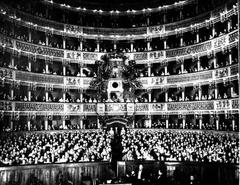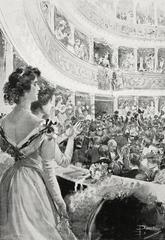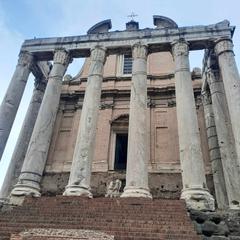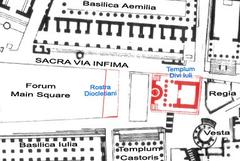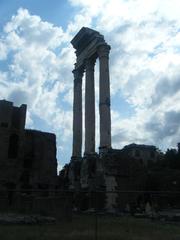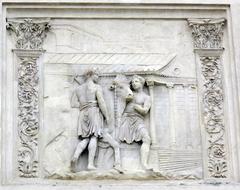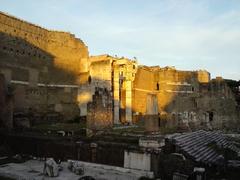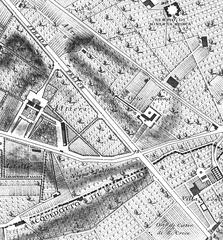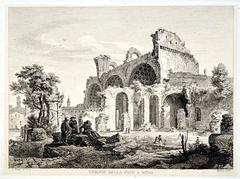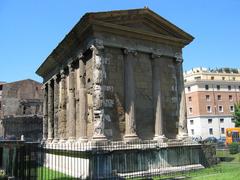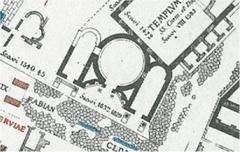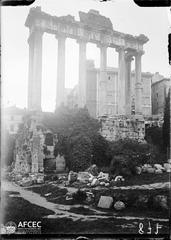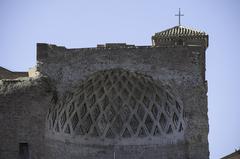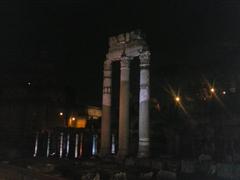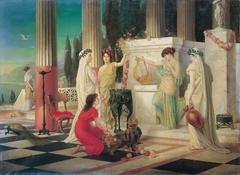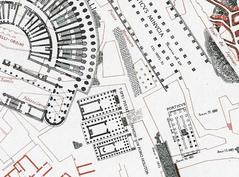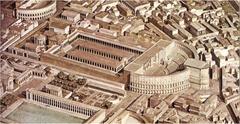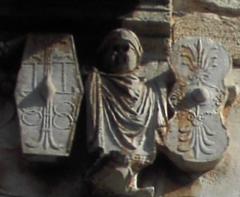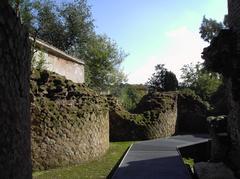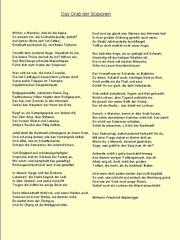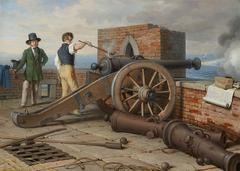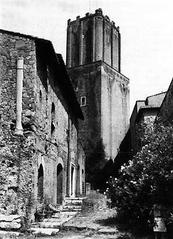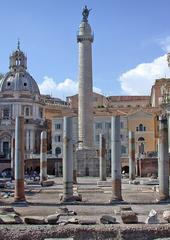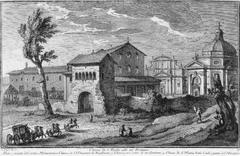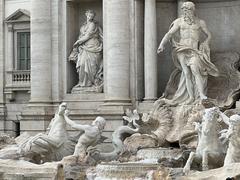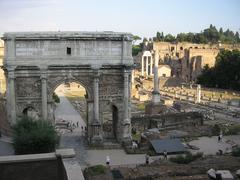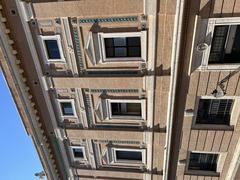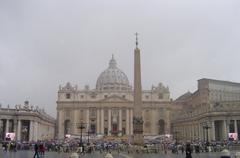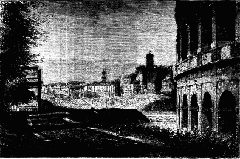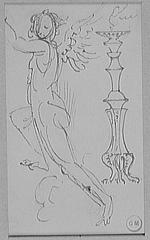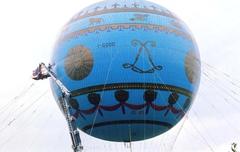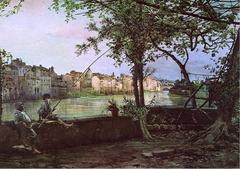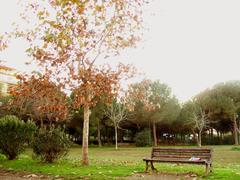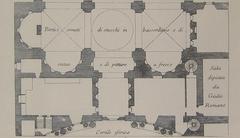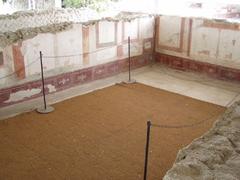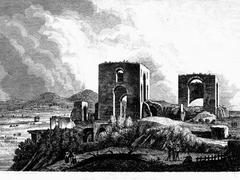
Visiting Fontana di Piazza Farnese in Rome: Hours, Tickets, and Tips
Date: 31/07/2024
Introduction
Nestled in the heart of Rome, the Fontana di Piazza Farnese stands as a timeless monument to the city’s rich historical and architectural heritage. Commissioned by Cardinal Alessandro Farnese in the late 16th century and designed by the renowned architect Giacomo della Porta, these fountains are more than just a visual delight—they are a window into the Renaissance era (Wikipedia, Turismo Roma). The granite basins, originally sourced from the ancient Roman Baths of Caracalla, reflect the Renaissance fascination with classical antiquity, blending historical elements with the artistic ingenuity of the period. The fountains’ construction, completed in 1585, was part of a broader urban development initiative led by the influential Farnese family, whose legacy continues to shape Rome’s cultural landscape (Turismo Roma).
For visitors, the Fontana di Piazza Farnese offers a serene escape amidst the bustling streets of Rome. The piazza is easily accessible, and the surrounding architecture, including the magnificent Palazzo Farnese, enriches the visitor experience. This comprehensive guide aims to provide all the essential information for planning a visit, including historical insights, architectural details, travel tips, and practical information. Whether you’re a history enthusiast, a photography aficionado, or simply looking to immerse yourself in Rome’s vibrant cultural heritage, this guide will help you make the most of your visit to this iconic landmark.
Table of Contents
- [Exploring Fontana di Piazza Farnese: History, Visiting Hours, and Travel Tips](#exploring-fontana-di-piazza-farnese-history-visiting-hours-and-travel-tipsexploring-fontana-di-piazza-farnese-history-visiting-hours-and-travel-tips)
- [Historical Context of Fontana di Piazza Farnese](#historical-context-of-fontana-di-piazza-farnesehistorical-context-of-fontana-di-piazza-farnese)
- [Origins and Construction](#origins-and-constructionorigins-and-construction)
- [Design and Features](#design-and-featuresdesign-and-features)
- [Historical Significance](#historical-significancehistorical-significance)
- [Restoration and Preservation](#restoration-and-preservationrestoration-and-preservation)
- [Visitor Experience](#visitor-experiencevisitor-experience)
- [Special Events and Guided Tours](#special-events-and-guided-toursspecial-events-and-guided-tours)
- [Photographic Spots](#photographic-spotsphotographic-spots)
- [Practical Information](#practical-informationpractical-information)
- [FAQ](#faqfaq)
- [Historical Context of Fontana di Piazza Farnese](#historical-context-of-fontana-di-piazza-farnesehistorical-context-of-fontana-di-piazza-farnese)
Exploring Fontana di Piazza Farnese: History, Visiting Hours, and Travel Tips
Historical Context of Fontana di Piazza Farnese
Origins and Construction
The Fontana di Piazza Farnese, located in the heart of Rome, is a testament to the city’s rich history and architectural prowess. The fountains, which grace the Piazza Farnese, were commissioned by Cardinal Alessandro Farnese in the late 16th century. The cardinal, who later became Pope Paul III, was a significant patron of the arts and sought to embellish the piazza adjacent to his family’s palatial residence, the Palazzo Farnese.
The fountains themselves were designed by Giacomo della Porta, a prominent architect and sculptor of the Renaissance period. Della Porta was renowned for his work on several other fountains in Rome, including the Fontana del Moro in Piazza Navona and the Fontana delle Tartarughe in the Jewish Ghetto. The construction of the Fontana di Piazza Farnese began in 1580 and was completed in 1585.
Design and Features
The design of the Fontana di Piazza Farnese is characterized by its elegant simplicity and classical elements. Each fountain consists of a large granite basin, which was originally sourced from the ancient Roman Baths of Caracalla. These basins are elliptical in shape and rest on a pedestal adorned with the Farnese family coat of arms, featuring a fleur-de-lis motif.
At the center of each basin stands a smaller, circular basin supported by a baluster. Water flows gracefully from the central basin into the larger one, creating a serene and harmonious effect. The use of granite and the incorporation of ancient Roman elements reflect the Renaissance fascination with classical antiquity and the desire to revive and emulate the grandeur of ancient Rome.
Historical Significance
The Fontana di Piazza Farnese holds significant historical value, not only for its architectural beauty but also for its connection to the Farnese family and their influence on Rome’s cultural and political landscape. The Farnese family was one of the most powerful and influential families in Renaissance Italy, with members holding prominent positions in the church and state.
The fountains were part of a broader urban development project initiated by Cardinal Alessandro Farnese, which included the construction of the Palazzo Farnese and the enhancement of the surrounding piazza. The Palazzo Farnese, designed by Antonio da Sangallo the Younger and later completed by Michelangelo, is one of the most magnificent examples of Renaissance architecture in Rome. Today, it serves as the French Embassy in Italy.
Restoration and Preservation
Over the centuries, the Fontana di Piazza Farnese has undergone several restorations to preserve its structural integrity and aesthetic appeal. One of the most significant restorations took place in the 19th century under the direction of Pope Pius IX. This restoration aimed to address the wear and tear caused by time and environmental factors, ensuring that the fountains remained a cherished landmark in Rome.
In recent years, the fountains have continued to receive attention from conservationists and heritage organizations. Efforts have been made to maintain the water quality and prevent damage from pollution and vandalism. The fountains are regularly cleaned and inspected to ensure their longevity and to preserve their historical and artistic significance for future generations.
Visitor Experience
For visitors to Rome, the Fontana di Piazza Farnese offers a glimpse into the city’s rich historical and cultural tapestry. The piazza is easily accessible and provides a tranquil setting to admire the fountains and the surrounding architecture. Visitors can enjoy a leisurely stroll around the piazza, take photographs, and appreciate the intricate details of the fountains.
Special Events and Guided Tours
While admission to the piazza is free, special events and guided tours are occasionally available. These tours offer deeper insights into the historical significance and architectural details of the fountains and the surrounding area. It is recommended to check with local tour operators or the official tourism website of Rome for the latest information on guided tours and events.
Photographic Spots
The Fontana di Piazza Farnese provides picturesque spots for photography enthusiasts. The best times for photography are early morning or late afternoon when the lighting enhances the beauty of the fountains and the surrounding architecture.
Practical Information
- Location: Piazza Farnese, Rome, Italy
- Nearest Metro Station: Campo de’ Fiori (approximately a 5-minute walk)
- Opening Hours: The piazza is open to the public 24/7, but it is recommended to visit during daylight hours for the best experience.
- Admission: Free
- Best Time to Visit: Early morning or late afternoon to avoid the crowds and enjoy the fountains in a peaceful setting.
- Dining Options: Several cafes and restaurants are located nearby, offering a variety of dining options ranging from casual eateries to fine dining.
For more information on visiting the Fontana di Piazza Farnese and other attractions in Rome, you can refer to the official tourism website of Rome.
FAQ
What are the visiting hours for Fontana di Piazza Farnese?
The piazza is open to the public 24/7, but it is recommended to visit during daylight hours for the best experience.
Is there an admission fee for Fontana di Piazza Farnese?
No, admission to the piazza and the fountains is free.
Are guided tours available for Fontana di Piazza Farnese?
Yes, guided tours are occasionally available. Check with local tour operators or the official tourism website of Rome for more information.
What is the nearest metro station to Fontana di Piazza Farnese?
The nearest metro station is Campo de’ Fiori, which is approximately a 5-minute walk from the piazza.
Call to Action
Stay updated on more historical sites and travel tips by downloading our mobile app, checking out related posts on our website, or following us on social media for the latest updates. By understanding the historical context and significance of the Fontana di Piazza Farnese, visitors can gain a deeper appreciation for this remarkable landmark and its place in the rich tapestry of Rome’s history.
Conclusion
The Fontana di Piazza Farnese is not merely a set of decorative fountains but a profound emblem of Rome’s historical, architectural, and cultural tapestry. Their origins, deeply rooted in the Renaissance period and connected to the illustrious Farnese family, highlight a time when art and architecture flourished in the Eternal City (Wikipedia, Turismo Roma). The strategic placement of the fountains in Piazza Farnese, coupled with their elegant design and historical significance, makes them a must-visit for anyone exploring Rome.
Whether you are visiting for the architectural beauty, the historical context, or simply to enjoy a peaceful moment in one of Rome’s most charming piazzas, the Fontana di Piazza Farnese offers a unique and enriching experience. The fountains, with their enduring presence and the efforts to preserve their integrity, continue to captivate the hearts of locals and tourists alike. For a deeper appreciation of this remarkable landmark, consider exploring nearby attractions, joining a guided tour, or simply taking the time to soak in the tranquil ambiance of the piazza. By understanding and appreciating the rich history and cultural significance of Fontana di Piazza Farnese, visitors can truly connect with the essence of Rome (Rome Wanderlust).
References
- Wikipedia. (n.d.). Fontane di Piazza Farnese. Retrieved January 8, 2024, from Wikipedia
- Turismo Roma. (n.d.). Fountains of Piazza Farnese. Retrieved January 8, 2024, from Turismo Roma
- Rome Wanderlust. (n.d.). Piazza Farnese: Everything you need to know. Retrieved January 8, 2024, from Rome Wanderlust
